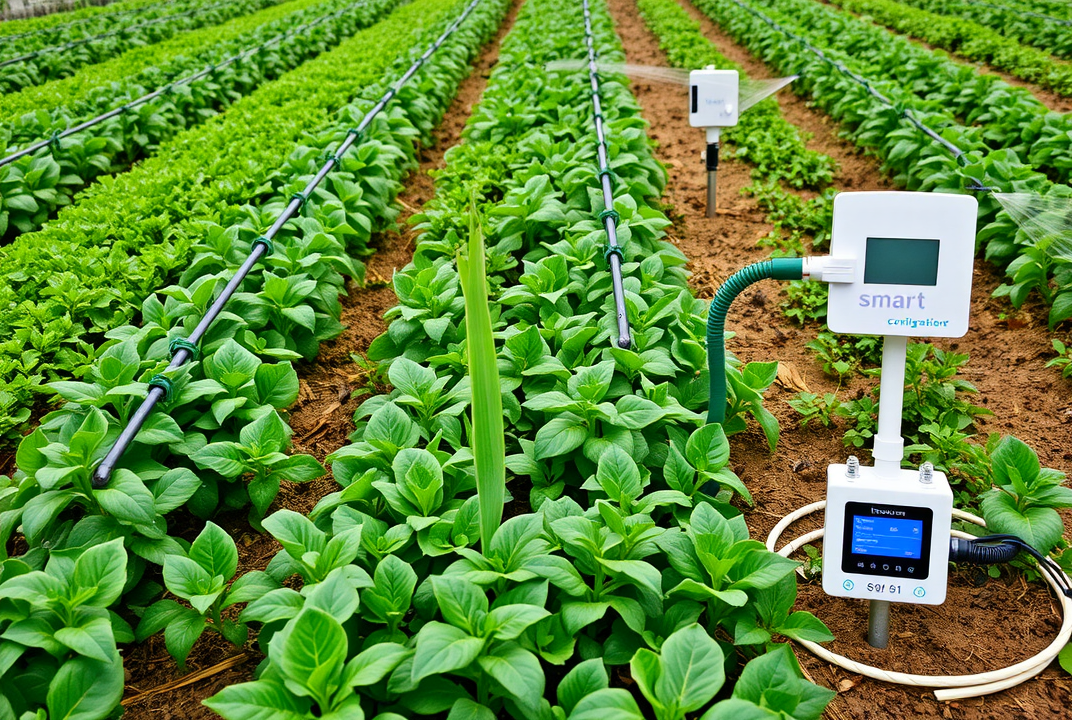Top Irrigation Systems for Small Farms: A Comprehensive Review

Introduction
Did you know that over 70% of global freshwater use is attributed to agriculture? Efficient irrigation systems are vital for the sustainability of small farms. With environmental concerns and water scarcity becoming more significant, farmers are increasingly turning to advanced irrigation solutions. In this comprehensive review, you will discover the latest irrigation systems suitable for small farm operations, understand their advantages, disadvantages, and learn how to select the right one for your needs.
The Importance of Efficient Irrigation
Efficient irrigation is crucial for maximizing crop yields and ensuring sustainable farming practices. A small farm's success heavily depends on an irrigation system that conserves water, minimizes energy use, and ensures even water distribution.
Key Considerations in Choosing an Irrigation System
-
Resource Availability
-
Consider your farm's water source and supply consistency.
-
-
Crop Requirements
Different crops have unique water needs.
-
Budget Constraints
-
Evaluate the initial costs and maintenance expenses.
-
-
System Compatibility
-
Ensure that the irrigation system supports your existing farm infrastructure.
-
-
Technology and Sustainability
-
Look for systems that offer sustainable solutions like low electricity requirements and smart controllers.
-
Types of Irrigation Systems
1. Drip Irrigation
Overview: Drip irrigation delivers water directly to the plant roots through a network of valves, pipes, and emitters.
-
Pros: Highly efficient, reduces water waste, minimizes soil erosion.
-
Cons: Requires periodic maintenance, initial setup cost.
Best For: Farms with assorted crops that require varying water amounts.
2. Sprinkler Systems
Overview: Utilizes a network of pipes and sprinklers to distribute water over the landscape, similar to natural rainfall.
-
Pros: Broad coverage, suitable for various terrains.
-
Cons: Potential water wastage due to evaporation and wind drift.
Best For: Fields with uniform crop patterns.
3. Surface Irrigation
Overview: Water is distributed over the field surface by gravity.
-
Pros: Low initial investment, simple to operate.
-
Cons: Less efficient, can lead to waterlogging.
Best For: Farms with level fields and water-tolerant crops.
4. Micro-Irrigation
Overview: Similar to drip irrigation, but offers more precision with water distribution.
-
Pros: Improved water use efficiency, better for sensitive crops.
-
Cons: Can be costly, may need technical expertise for setup.
Best For: High-value crops like vegetables and fruits.
Advancements in Irrigation Technology
Modern technology significantly influences irrigation systems. The integration of sensors and smart controllers allows farms to use predictive data, improving water efficiency and crop health. Innovations such as remote monitoring and automated scheduling can reduce labor costs and optimize water usage.
How to Select the Right System for Your Farm
Step 1: Assess Your Farm's Specific Needs
Evaluate your crops and their watering demands.
Determine your budget limitations.
Step 2: Compare Potential Systems
Review the pros and cons of each system type.
-
Examine the compatibility with your existing setup.
Step 3: Consider Future Expansion
-
Choose a system that can adapt to increased production and technological advancements.
Step 4: Seek Expert Guidance
-
Consult with agricultural experts or local extension services to gain insights into the most suitable system for your farm.
Case Studies in Small Farm Success
Case Study 1: GreenLeaf Family Farm
GreenLeaf, a small organic farm, implemented a micro-irrigation system, resulting in a 30% reduction in water usage and a 20% increase in crop yield.
Case Study 2: RiverBend Agro
RiverBend Agro shifted from surface irrigation to a sustainable drip system, enabling them to cultivate more diverse crops while reducing water waste.
Common Challenges and Solutions
Issue: System Maintenance
-
Solution: Regular inspections and using quality components.
Issue: Water Supply Variability
-
Solution: Implement storage solutions such as tanks and ponds.
Conclusion
Selecting the right irrigation system is fundamental to the success and sustainability of small farms. By understanding your farm's unique needs and considering the advancements in technology, you can pick an irrigation solution that supports both productivity and environmental responsibility. Investing in the right equipment not only ensures a robust crop yield but also contributes to sustainable water management.